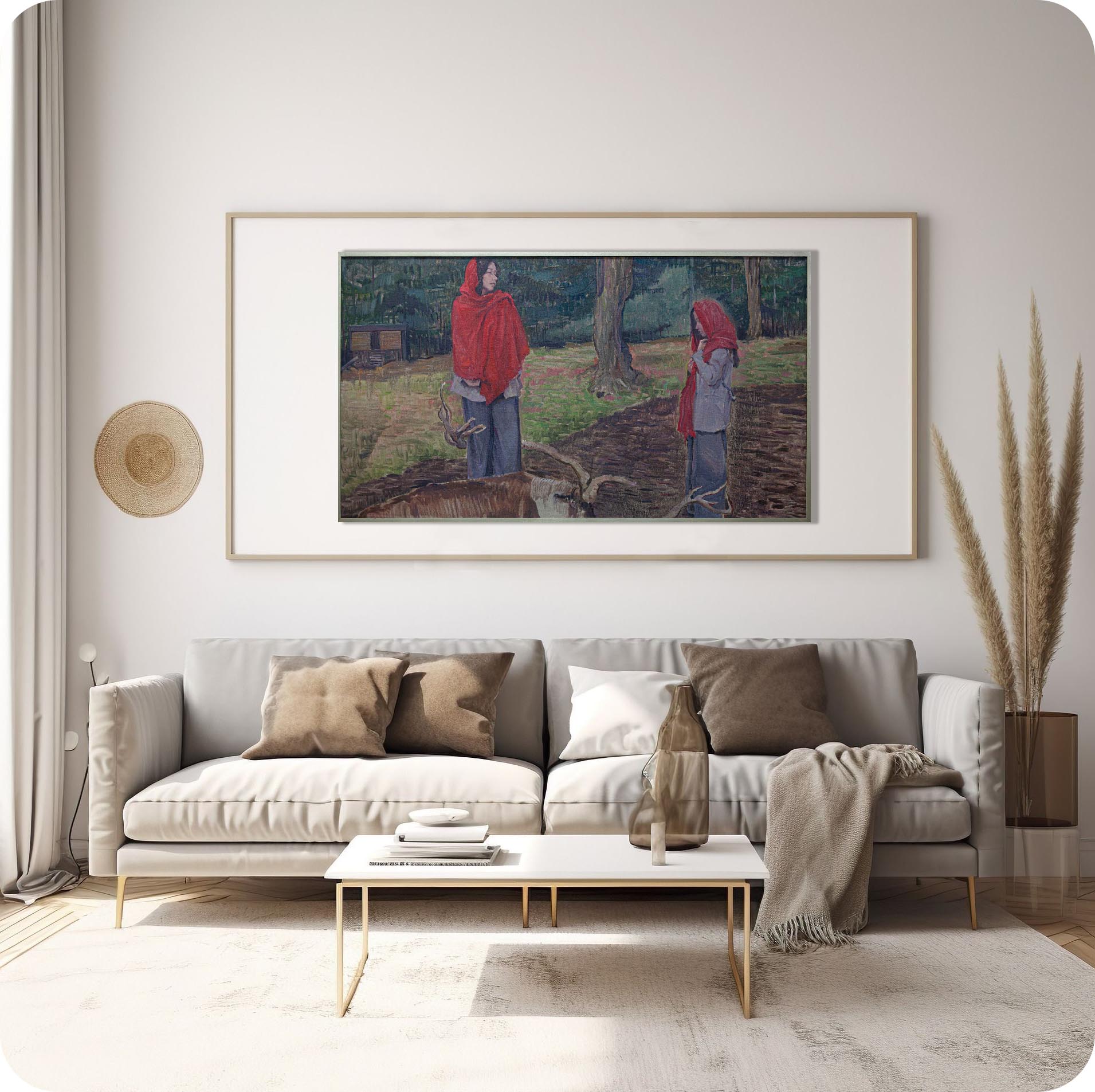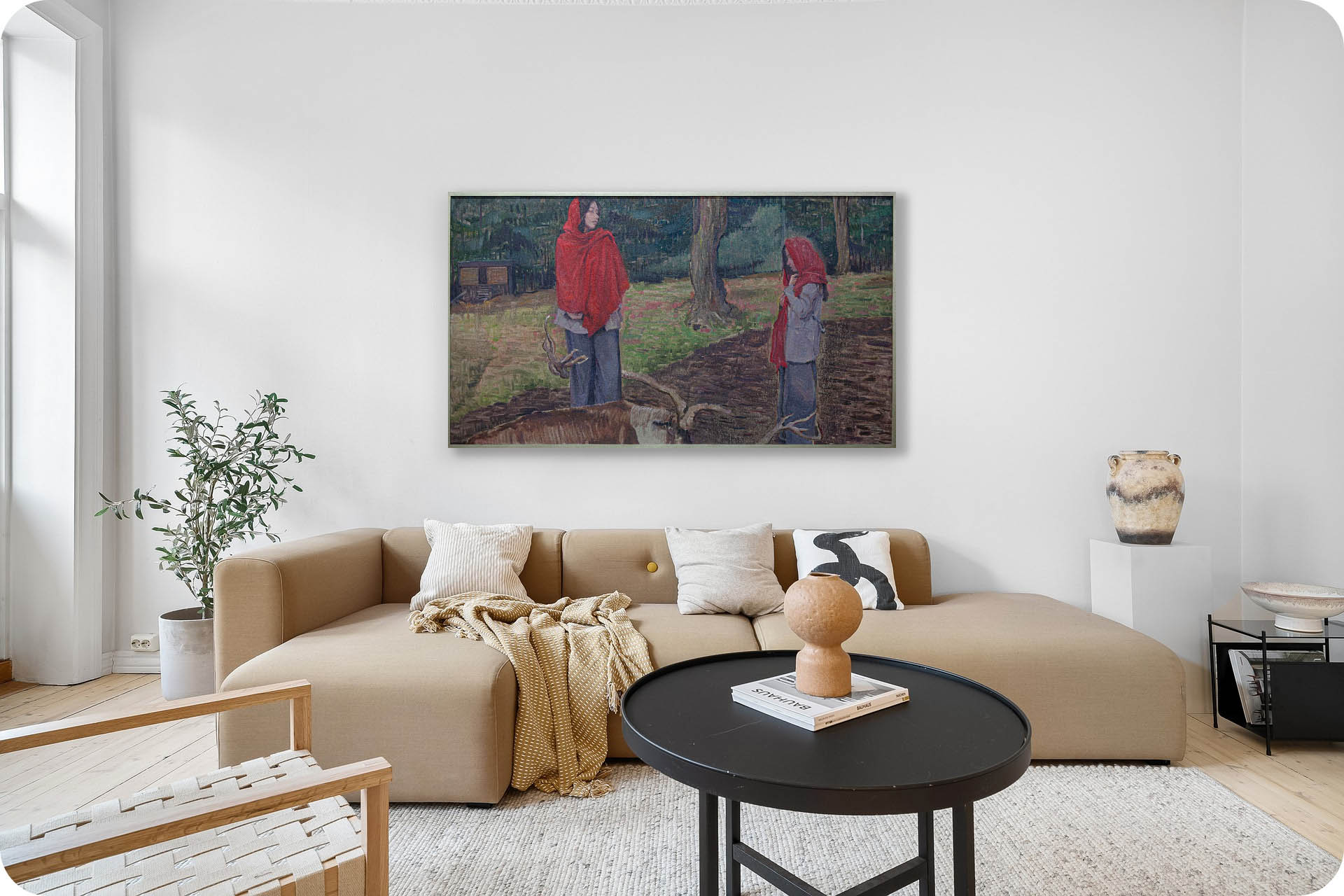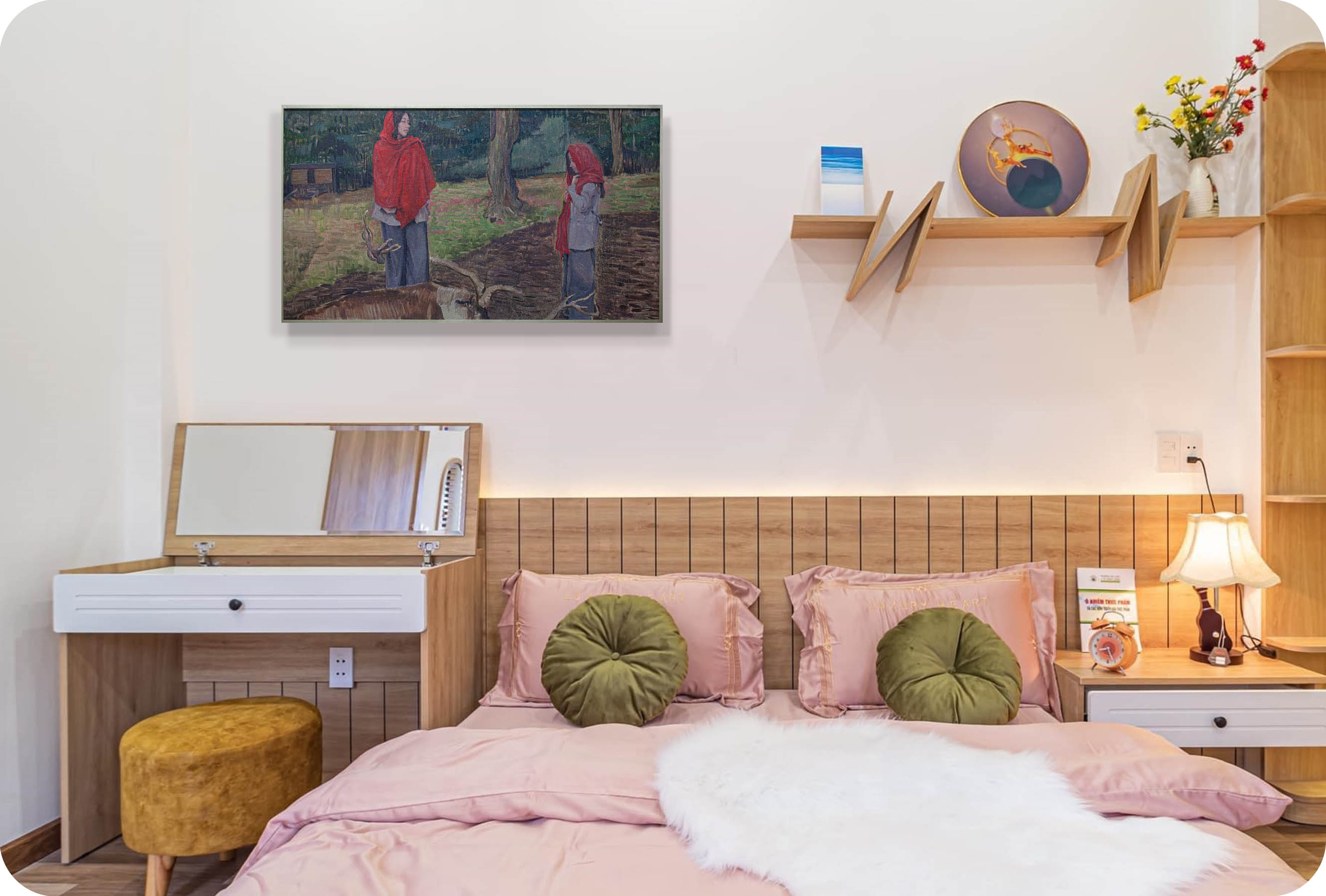This painting was created in 2019. This year is the third year of college. I started to prepare for my graduation work, so I tried paintings with more concepts, depth and formal unity. In these paintings, you Being able to begin to see a more specific me. Such attempts did add weight to the work, but it was only a small step compared to the depth that would later come with the weight of life. Then came the COVID-19 epidemic at the end of the year, and the future that people expected changed its face, either urgently or slowly.
The painting is painted with thin colors and is completed in one go.
What is recorded is a short dialogue between Xing'an Mountains, reindeer and people.
Inches: x in
Size without the frame: x cm
Country: China
Date: 2019
Materials: Oil paint on linen
Condition: well preserved
Creative themes and style | My works revolve around the creative concept of "The land of humanity, People on the land". The people in the painting are people in nature, and the lines, shapes, and colors are close to nature. The nature in the painting is nature in the eyes of humans, existing in interaction with humans.I don’t pursue a series of works with a fixed and continuous style. I hope that the style of the pictures will synchronize with the changes in my life and always remain oscillating. The performance of the work must be in sync with the development of one's own life in order to be Sincere and powerful. Ideas are later.
An Interview with Artist Philo by Artphiloso Gallery
If you would like to collect this artwork or know more about the artist, please contact us.



A1: The two women appear as variations of the same person, or as projections across different times and spaces. They gaze toward one another while maintaining distance, suggesting an inner dialogue, the coexistence of parallel worlds, or the entanglement of memory and reality.
A2: The red shawl acts as the visual focal point, resonating vividly against the subdued forest background. Red embodies warmth and vitality, yet it may also allude to identity, fate, or spiritual connection—becoming a silent thread that binds the two figures together.
A3: The antlers stretch across the space between the two figures, forming a natural boundary and a symbolic barrier. They both separate the subjects of two possible realms and reference themes of nature, life, and cyclical renewal, enriching the painting with layers of metaphor.
A4: The setting avoids excessive detail, instead relying on calm, even tones to uphold the overall mood. This subtle treatment emphasizes the dramatic relationship between the figures and the antlers, while imbuing the scene with a quiet, weighty presence of nature.
A5: Between Two Times and Places carries both the weight of reality and the ambiguity of dream. The figures’ silent exchange of glances, the antlers’ obstruction, and the stillness of the forest converge into a “suspended moment,” allowing the viewer to sense the intersections of identity, time, and inner self.
A: Click here to view ARTPHILOSO's Guide for Collectors.
More paintings from this series:
